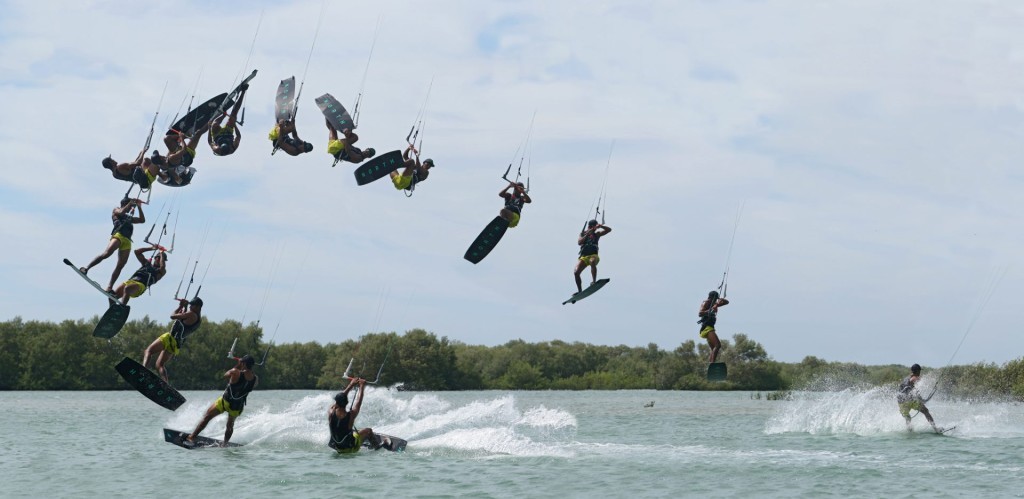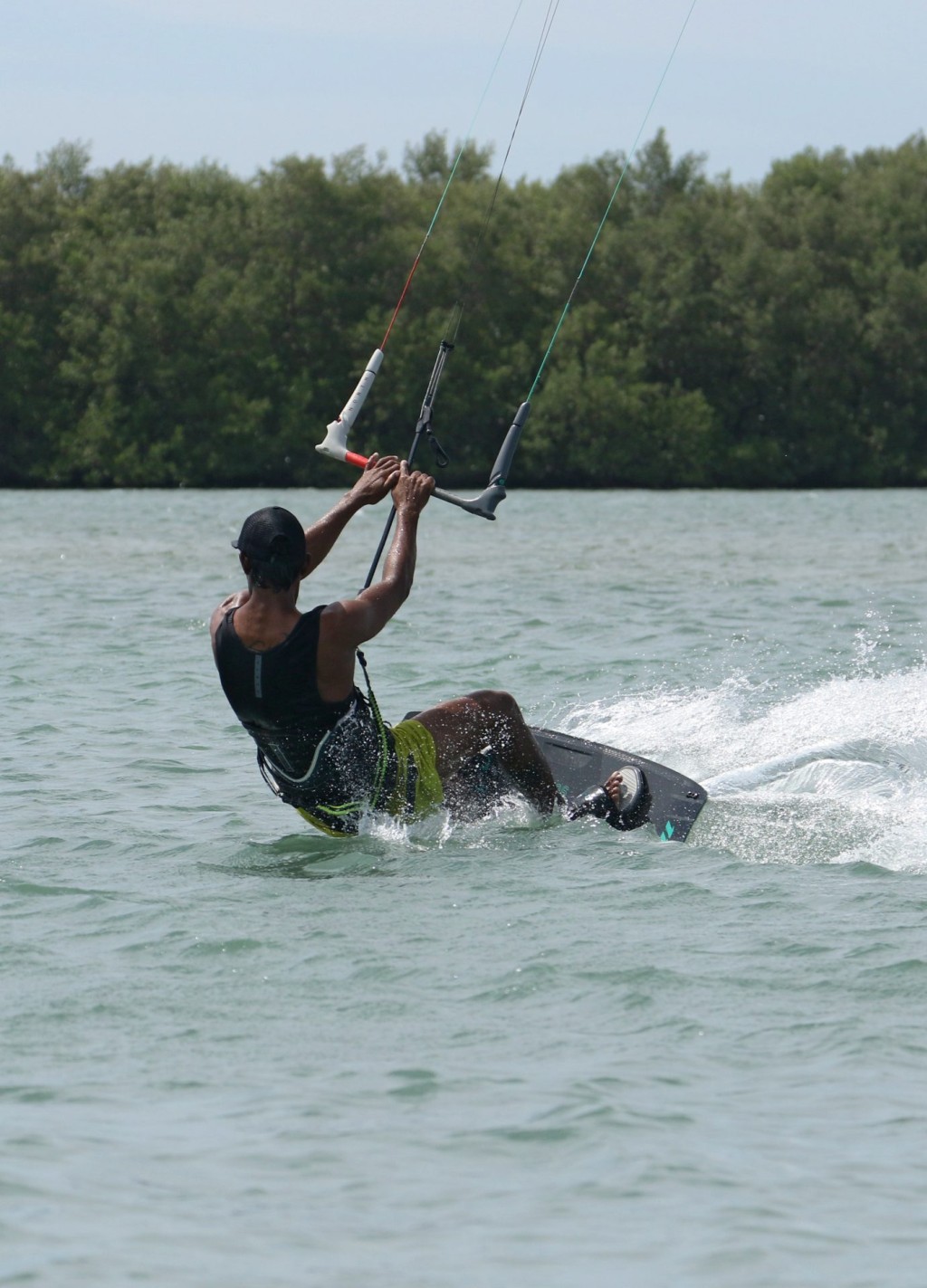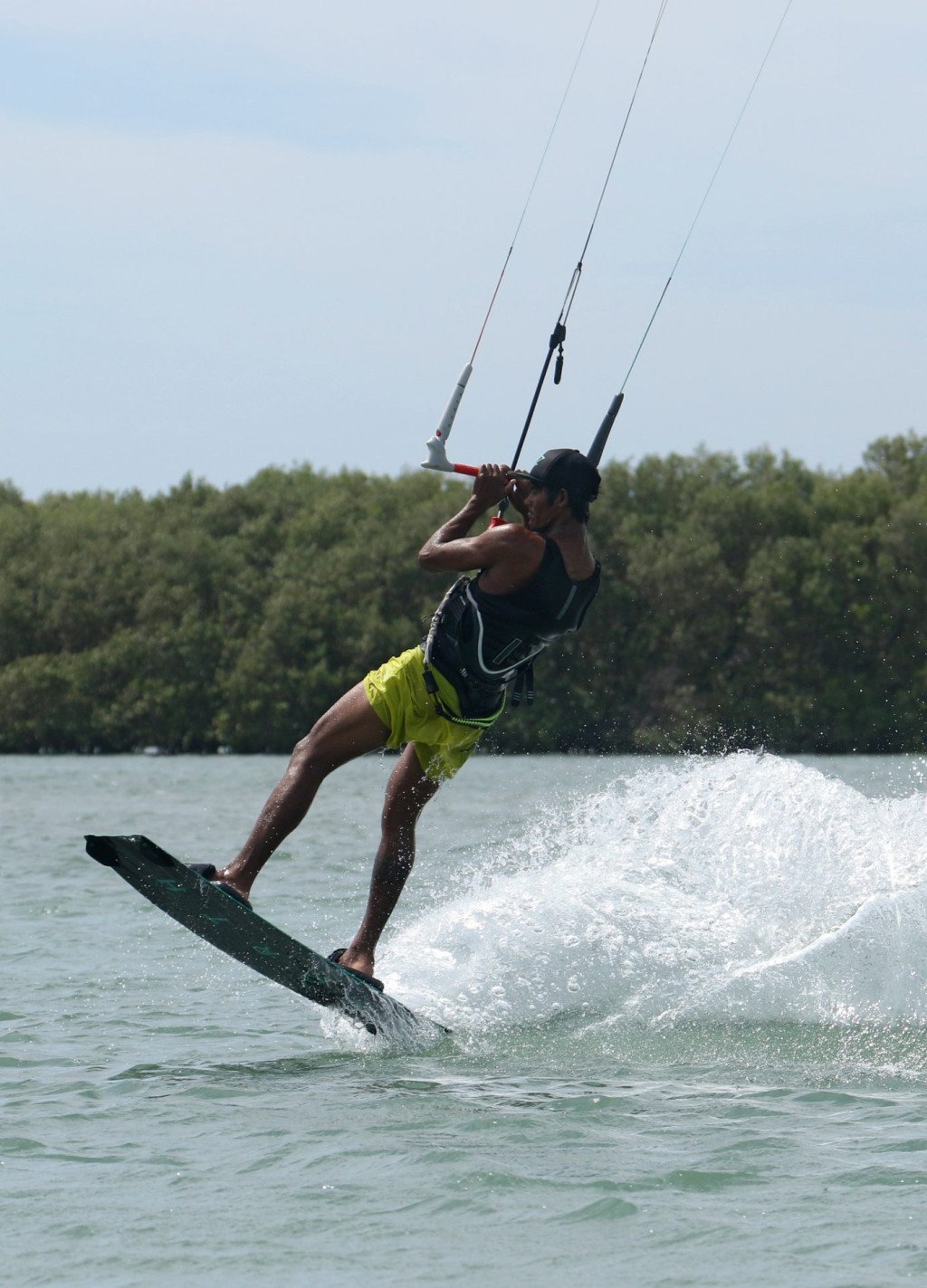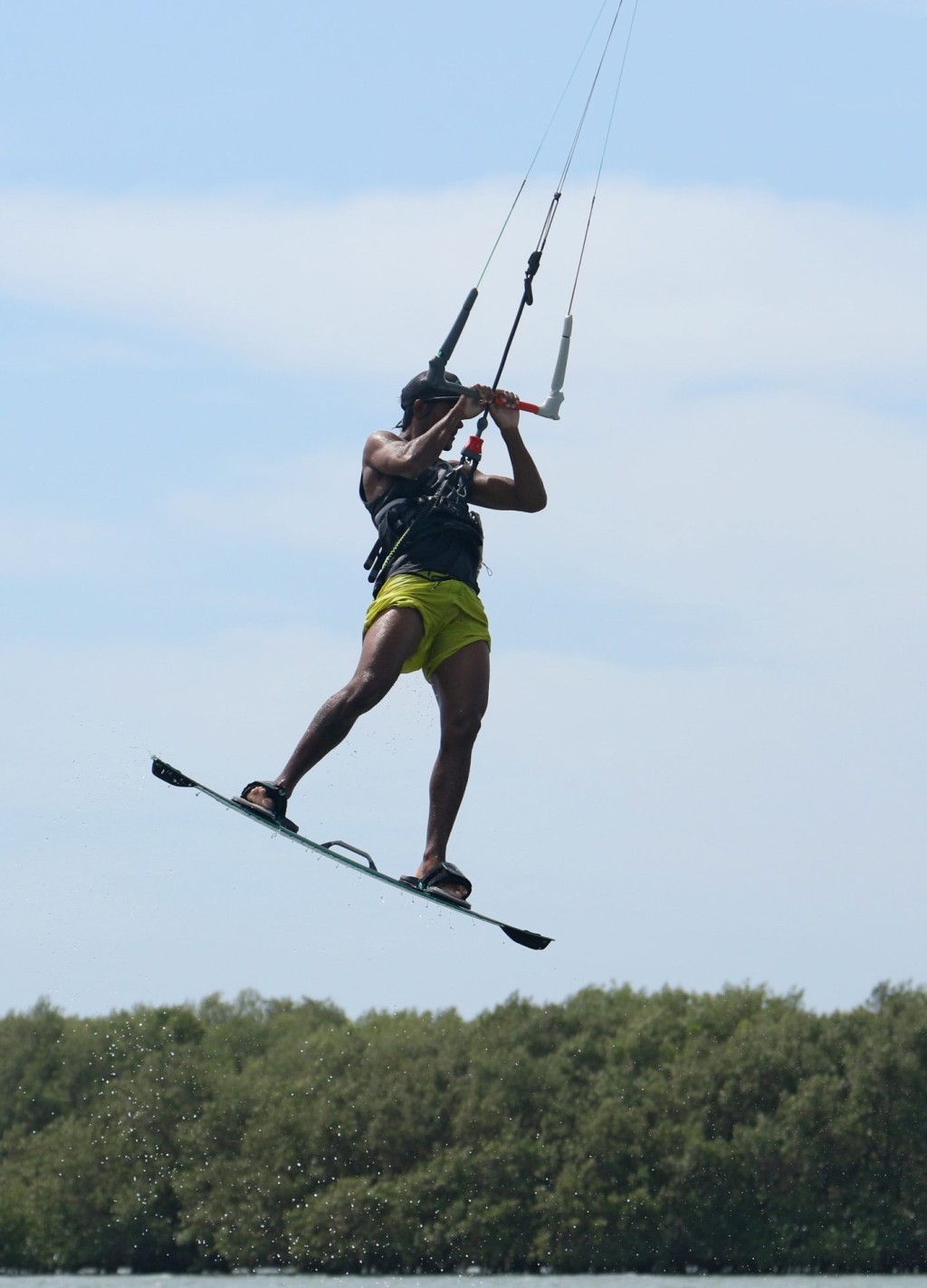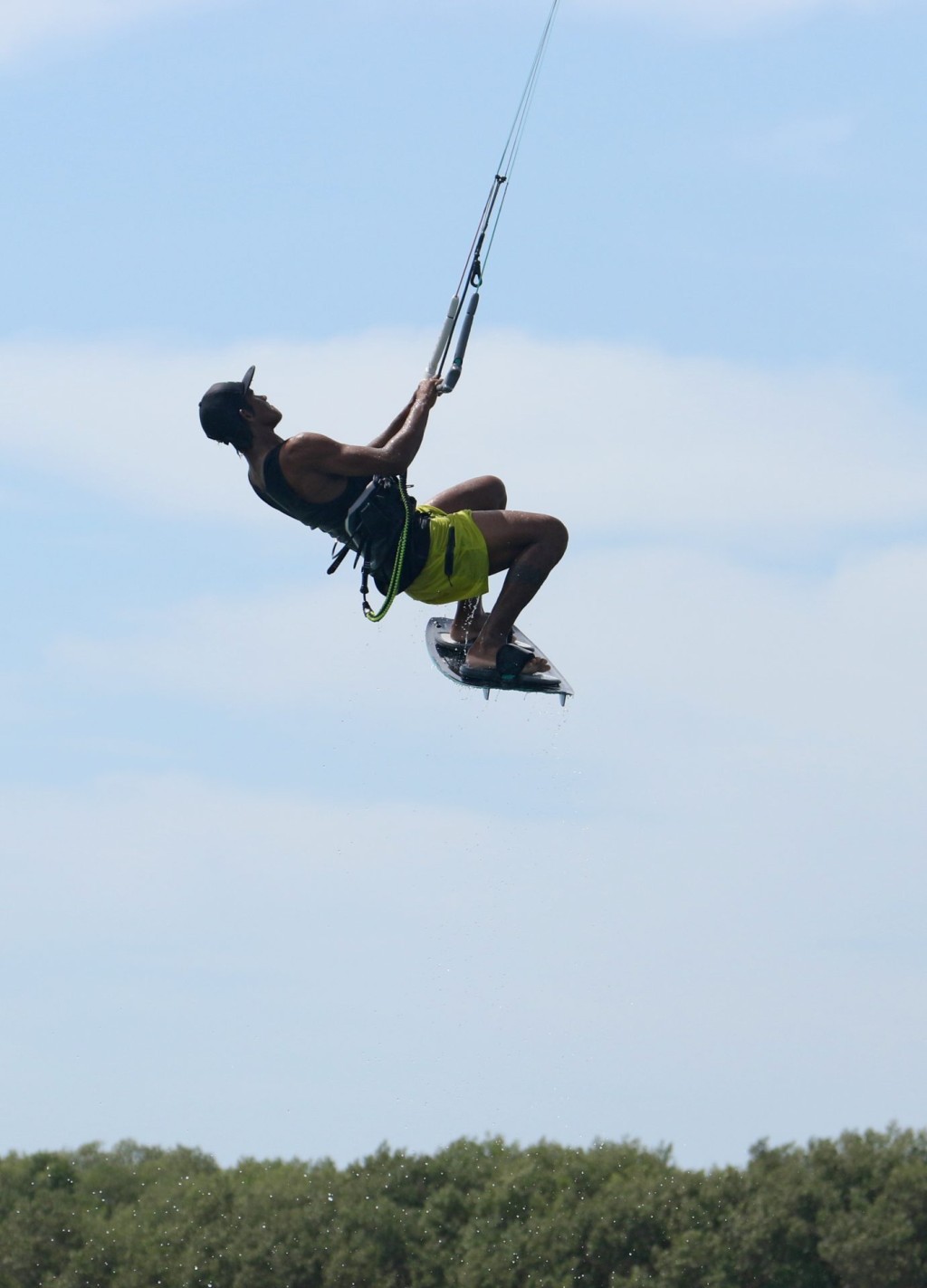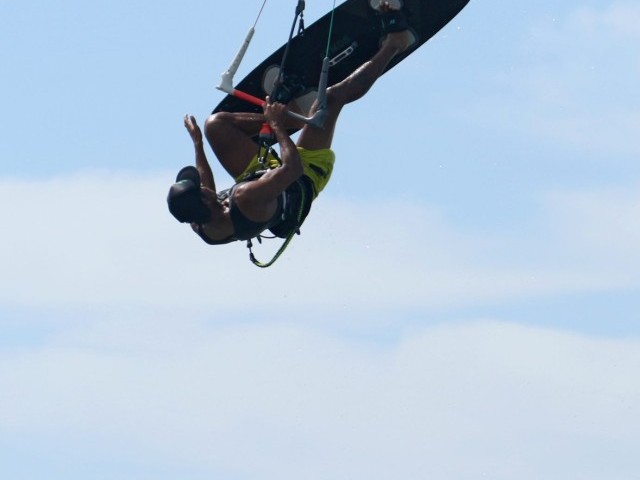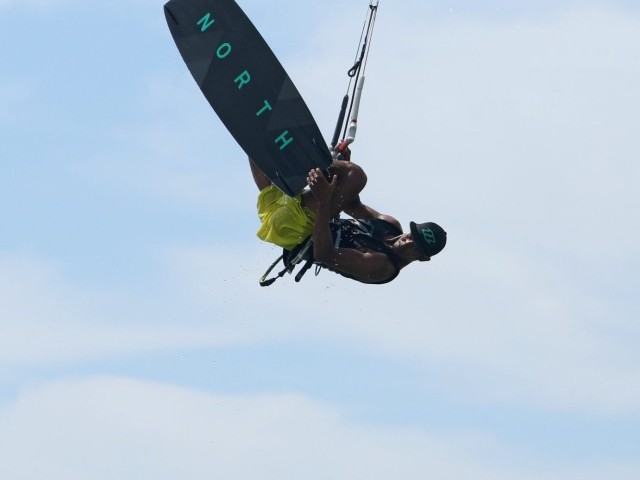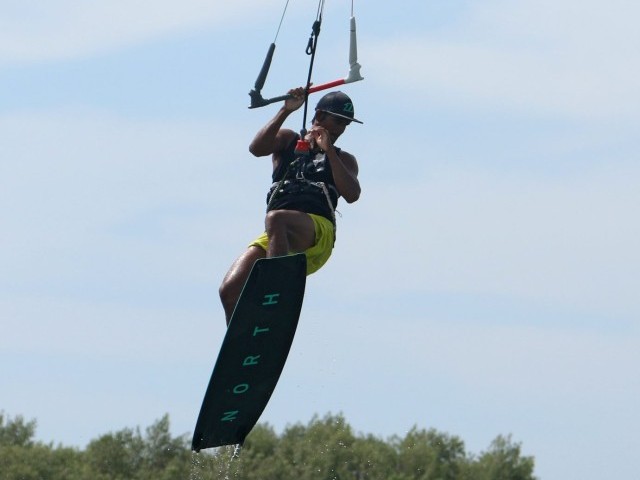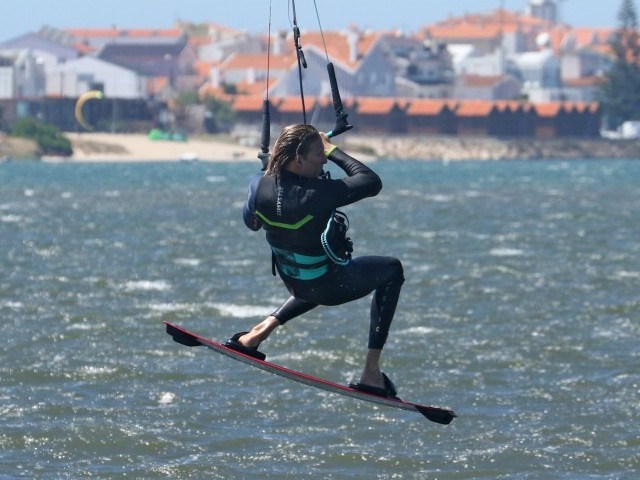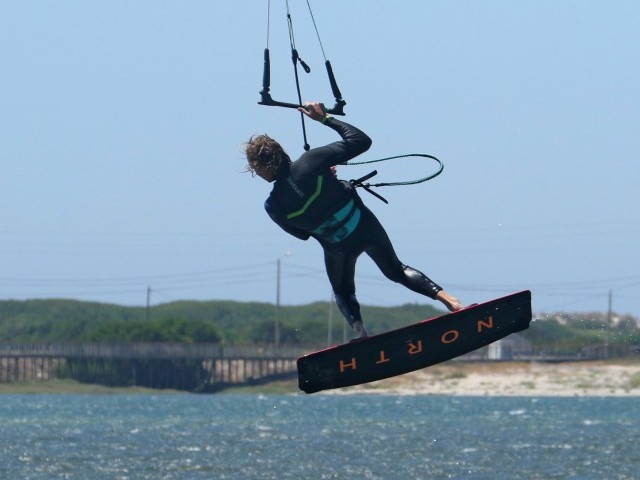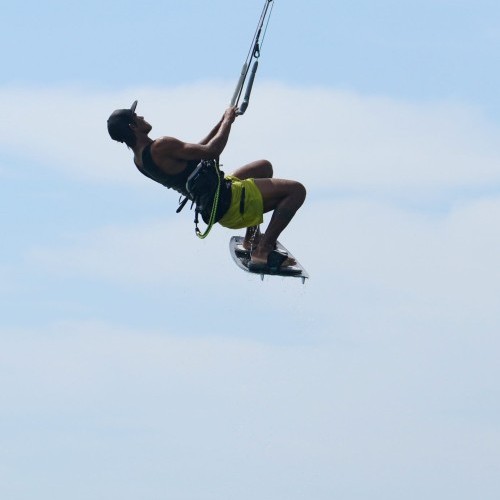
Inverted Grabbed Double BLT
Technique / Intermediate
Introduction
This one harks back to the alumni of Space Monkeys and all those on the tour of that era. Changing direction was still cool, and razzing it up, whether bouncing off a beach like Martin in Los Roques, or adding multiple rotations and board offs to claim a pair of world titles as per Mr Shinn was definitely a sign of substance. And what’s more, as we’ve so often repeated in these pages, transitions are both fun and functional. So, if it’s not blowing 40 knots and you’re not obsessed with adding another 30cm, how about spending your time wisely and adding this peach to your repertoire.
Fortunately the name is extremely descriptive, so no prizes for guessing what’s involved. However, piecing them together in the correct order should help you nail this. And who better qualified to demonstrate this with more than a pocketful of style other than Heliarde.
Approach Pic A.
Any transition requires a bit less speed than a standard jump as you need to come back the other way. However, you’ll need to find a balance here, because you still need enough height and sufficient time to fit all the bits in. What you’re looking for is enough control on take-off to reward you with more up and less travel, which gives you time for the move yet still offers you a makeable landing the other way. Come in with power but take some speed off with a decent edge. Give the kite a good short sharp send so that you generate lift without the kite moving too far back in the window. Here Heliarde comes in with tension but not too much speed, he gives the kite a decent send and lets the bar follow the sweet spot out to make sure that he gets more lift and less travel.
Take-Off, The Kick Pic B.
Being a double rotation, you will need to turn quicker. As such you can afford to carve harder into your take-off and also use your head more than you would for a single. To guarantee control of your rotation and jump, you still need to kick up and round off your back leg, extending towards the kite. It’s so tempting to squash down over your back leg to turn quickly, but this will result in an uncontrollable spin, so KICK. It’s also imperative that you pull the bar in level once you’ve kicked, to stop the kite above you, offering maximum float and confidence. You can see that Heliarde has carved round into his back roll to make sure he gets enough rotation for the double, and even more importantly he is full extended on take-off because he has kicked up into the move.
Number 1 Pic C.
Rotation number one is your set up roll. You won’t be doing much other than anticipating the end of the rotation if your take off was perfection, but just in case it wasn’t, no. 1 gives you a chance to make amends and get properly comfy for the next one. As you’re still upright during the first one, it gives you the perfect opportunity to make sure that the kite is above you at 12 o’clock and that your bar is level. If everything is right now, then it won’t be such a leap of faith to invert and grab during the second instalment. In the photo you can see that Heliarde is coming around, he hasn’t yet brought his knees up (he’ll need them shortly), and he’s just hanging, looking over his front shoulder to see where he’s going, comfortably waiting to finish his first rotation. Nothing more, but equally, nothing less.
Time To Get Busy Pic D.
As soon as you start your second rotation it’s time to get inverted. Keeping your elbows in close to act as a fulcrum point you can throw your head back whilst lifting your knees towards the bar. In this position as your knees rise and head tilts back, you’ll see saw back and the board will lift. Timing wise you should wait to make sure that your going into number two, as once you invert your rotation will slow. If you start early you run the risk of killing the second rotation completely. It’s clear to see how Heliarde is fulcruming about his elbows. If your bar is out on straight arms, you’ll find it difficult to invert.
Bone It Pic E.
As your board starts to rise and you feel the inversion it’s time to get the grab on. Simplest and most stylish way to reach your board is to bone it out. Pushing and extending your front leg out whilst pulling your back knee in will bring the board close and within easy reaching distance, so that you won’t be clumsily groping for it. At the same time you can release what was your front hand, the one that you don’t need for the landing dive. You can see Heliarde extending his front leg whilst tucking his back knee up into his chest. If you don’t have to reach for the board, you’re far less likely to pull on the bar for support.
The Money Shot Pic F.
The culmination of all the previous points. Once you’ve got the grab try and hold it for as long as possible. It won’t be forever as this is a quick move, but try and make it count. This is when your take off and kite positioning will really come into play. If the kite is above you and you’re elevating up rather than travelling along you’ll feel confident, balanced and relaxed. Time to shine, matching board and cap not obligatory! Main points to garner from this image are that even in the inverted grab, Heliarde’s bar is still level, his head is still looking over his shoulder to see where he’s going and it’s a lovely looking move.
The Landing Pic G.
Once you start to descend it’s a matter of setting up for a soft touch down. Looking where you expect to land you can judge when to release the grab, drop your legs and dive your kite. As the inversion will have slowed your rotation, you’re quite likely to be coming out of this without your board being fully round. A decent dive will help finish the rotation and pull you downwind, giving you some forward momentum to soften the impact. Here Heliarde has spotted the Heli-Pad and is giving the kite a decent dive. As it pulls, he’ll allow his legs and board to follow his hips downwind for a decent reception.
Top Tips
Before even contemplating the grab and inversion you should work out your take off for that elevator, not travellator jump. Knowing how fast to come in and what kite send to use will instil a greater confidence in the movements required and give you a much better sense of spatial awareness once you go upside down.
If you only concentrate on one thing post take-off, let it be kite position. As long as your kite is above you, you’ll float down regardless of what else happens. Drifting it whilst inverting can lead to a less comfortable conclusion.
Check out the sequence and videos for a real time refresher.
Common Problems
If you feel that your kite is flying too far past 12 o’clock on take off. Two main causes here. First one is the soft back leg, if you compress rather than kick, it doesn’t matter how well you control your kite it will fly back as you initiate your rotation. Exploding and kicking up is essential. The second cause is drifting the kite rather than sending it. If you drift it doesn’t generate the power until it’s gone way past 12. Send it but for a short time and the kite won’t move as much but it’ll generate the lift you’re looking for.
Not completing the rotation. Inverting too early. As you invert, you’ll look up and hopefully stall the rotation, but if you do this too early, you’ll kill it. Anticipate the 2nd roll and go as you begin it. Once you have the grab look over your front shoulder to spot your landing.
Landing on your back or getting around but no support. This is a matter of the kite drifting back to the new side of the window as you’re busy with the move and often as you’re holding the bar for support during the grab. Make sure that the kite is right before inverting. With the bar level when you know where the horizon is it’ll be easier to keep it there. If you invert with the kite already moving off, you’re more likely to lose awareness.
Keystones
- Control speed, Short Sharp Send
- Carve and Kick
- Hang and kite at 12
- Elbows in, invert, Bone and Grab
- Release and hefty dive
This technique article was in Issue 79 of IKSURFMAG.
Related
By Christian and Karine
Christian and Karine have been working together as a coaching team, running improver to advanced kitesurfing clinics since 2003.






